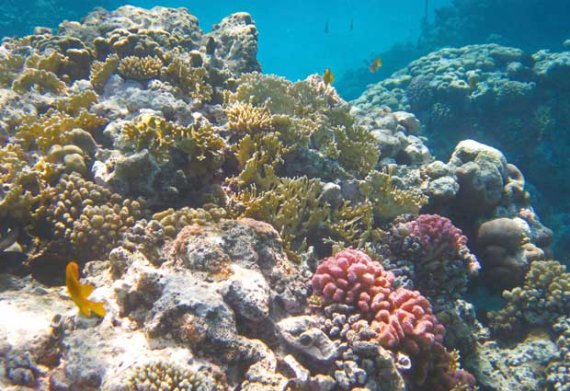Ecosystems do useful things for human beings. They provide food, for example, or oxygen, possibly in combination with the delightful experience of a country walk. All these different functions come under the category of ecosystem services. And all of them have a value. An international team led by Dolf de Groot (Environmental Systems Analysis) put them into a clear database which expresses the value of the services in hard currency. Coral reef, the natural world’s most valuable ‘asset’ comes out at 352,915 dollars per hectare, says De Groot. That is 123 times the value of an area of grassland – the least valuable type of land – of the same size. But whatever you do, don’t call the database (see www.es-partnership.org) a catalogue. The word price tag doesn’t go down very well either. ## What is wrong with a price tag on ecosystem services? ‘Words such as "price tag" and "costs" suggest that the item in question is replaceable. But what we are talking about here is something else entirely: determining the value of nature from a conservation point of view. We try precisely to prevent nature from disappearing and being sold out. The ESVD is a database and not a catalogue. The aim is to be able to weigh things up more effectively in decision-making processes. We ascribe values to nature-based services which are not normally given any value at all. The objective is to make their value explicit.’ ## How do you calculate the value of a coral reef? ‘The underlying question is: how do you make the importance of a coral reef to society explicit? The economic value is part of that, alongside the ecological value and the socio-cultural value – the emotional and moral meaning people attribute to nature. The problem is that only a quarter of the economic value of ecosystem services is expressed in monetary terms; the market price or the trading value of food and wood, for example. For the rest – such things as water or air purification – there is no immediate price tag. So you have to look at shadow prices: exchange value, for instance, or the losses you avoid thanks to ecosystem services. The database is the result of a meta-analysis of 320 publications on these sorts of pricing methods.’ Cultural services such as ‘a spiritual experience’ and ‘inspiration’ are rarely made explicit. The same goes for emotional value. Why is that? ‘Expressing cultural services in money terms meets with a lot of resistance. And it is difficult to express that in money terms. Perhaps you shouldn’t aim at that. What is a tree worth if it happens to be a sacred tree? Or a tree you look out on from your house? In principle, nature is priceless, and critics often use that as an argument against putting a value on ecosystem services. I agree with that, basically. But not many people make sound choices based on that ethical argument. The concept of ecosystem services makes the services nature provides explicit. The awareness-raising argument is very important.’ Fifteen years ago you published an article in Nature about the monetary value of ecosystem services, which was much cited (more than 5500 times!) Coral reefs were not as valuable then. How come? ‘Coral reefs have become scarcer. Their recreational value has gone up. In the calculations done then, eight ecosystem services were included; this time there were twelve. There is also much more awareness about ecosystem services nowadays. I am just working on an article in which we compare that study with the current one. I’ll give away one figure to Resource. At that time, the total value of all ecosystems was 47 quintillion (one billion billion), converted into today’s prices. Our calculations show that their value is now 150 quintillion. Three times as much.’ ## Where do all these calculations get you? ‘The ultimate goal is a sustainable world. We shall only achieve that if we are honest about the real costs of the loss of nature. We are moving slowly in the right direction. Nature that is lost to construction activities has to be compensated for nowadays. Carbon storage is something people looked askance at 20 years ago. Now we have programmes such as REDD, in which these kinds of calculation play an important role. These days every supermarket has a considerable range of organic and fair trade products. Awareness of the value of ecosystem services is starting to take root. But unfortunately it is going very slowly.’
Pricing the priceless
How much is a coral reef worth? You can look it up in Dolf de Groot's new database for ecosystem services.

